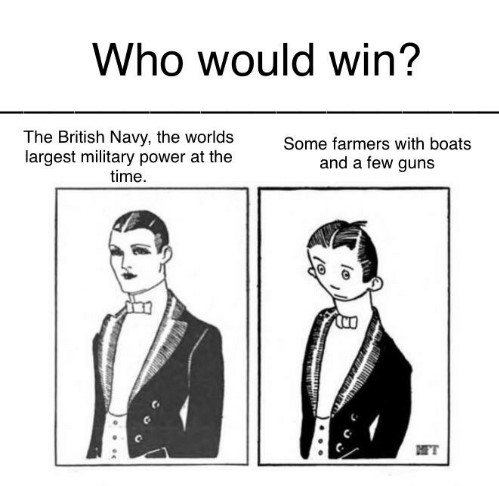The First Ever Meme
Pepe has become a popular image, as has Michael Jackson. A comic strip created in 1921 by a University of Iowa student also made history. But who created the first meme? How can these two iconic figures get such a large following?
Pepe the Frog
The Pepe the Frog meme is among the most popular on the Internet. Its origins date back to the non-political comic "Boy's Club" by Matt Furie. In 2016, Pepe became associated with white nationalism, resulting in a list of hate symbols maintained by the Anti-Defamation League. Then, in 2019, Hong Kong protesters began using Pepe as a symbol of hope. Pepe the Frog first appeared in artist Matt Furie's "Boy's Club" comics. In recent years, however, his popularity has grown as he has spread through social media communities.
In 2016, a politically incorrect channel on the imageboard 4chan started using Pepe the Frog as a parody of Trump's election. Pepe the Frog became popular among Trump supporters. However, it was only after the presidential election that Pepe the Frog became an alt-right symbol. As soon as Trump was elected president, the politically incorrect channel on 4chan changed the "Expendables" movie poster to depict conservative figures like Donald Trump.
Read More: https://renoarticle.com/how-lipstick-packaging-boxes-can-boost-your-aesthetic-lipstick-business/
Although Pepe was first used in the 1921 comics, it became a popular meme by 2008. Initially, it was shared as a reaction image on 4chan but soon became a viral sensation. Pepe quickly became an extremely versatile meme representing different types of emotions. Its popularity quickly spread to social media platforms such as Tumblr. In 2015, it was the most reblogged meme on Tumblr. But, as soon as it was shared too widely, Pepe lost the inside joke value.
Michael Jackson
Interestingly, the Michael Jackson meme was first made in 1921. The year is unknown, but it was probably around that time that MJ started to become famous. The idea was to mock the King of Pop's alleged behaviour. Fans started calling Jackson "MJ," "Bambi," and even "Wacko Jacko," a term with racist connotations. Thankfully, some of these nicknames didn't go far.
University of Iowa comic strip
This comic strip was created by University of Iowa students in 1921 and was a viral sensation. The account Yesterday's Print posted the comic on Tumblr, which posts historical content and shows parallels between past and present. Later, new captions were added, and it was quickly recognized as a meme. The comic is believed to have first appeared in an issue of the satirical journal The Judge.
The University of Iowa's satirical magazine "The Judge" published the strip in 1921. Its creators attributed the idea to the Wisconsin Octopus, a satirical magazine published at the University of Wisconsin. The comic strip has since been adapted to fit the meme definition. Today, Internet users still view this comic as a meme. Whether this is the first meme, or just a recurring prank, the origin of memes remains unknown.
Read More: https://www.vidny.net/2022/06/13/the-benefits-of-digital-printing-in-custom-packaging/
The University of Iowa Memes page was created by a student and has gained 2,000 likes in four hours. It has since gained four hundred likes and six-hundred likes within a day. Memes are not new on the Internet, but they have made their way into our society. They are modified images of pop-culture figures that make jokes and spread like wildfire.
The Surprising Academic Origins of Memes
Memes have been studied by linguistic creativity, evolutionary biology, and qualitative research. This article provides some insights into these topics. We'll explore some of the most popular memes and their surprising origins. Using metaphors can obscure effects that don't fit neatly into a logical framework. So, how can we understand and study these phenomena? And how can we use them to better understand our own thinking?
Studying internet memes
Internet memes are a form of cultural information transmitted across the Internet. Memes are cultural units that are considered to replicate with minimal change. They are also valuable as symbols and cultural research units, as they can create rapport with participants, foster relationship-building, and facilitate data collection through the Internet. In addition, they are an effective medium for transmitting ideas and practices, as they reflect human agency.
The definition of a meme varies widely, and their creative potential is determined by the context in which they are shared. In this study, three evaluators assessed each meme's meaningfulness. Memes are generally humorous, but their actual meanings can vary widely. Because they are easily understood, they have a wide range of possible meanings. Interestingly, the origins of internet memes may be as diverse as those who create them.
Researching memes in qualitative research
Memes can be helpful for various purposes, from understanding the effects of cultural stereotypes to illustrating a point. However, to get the most benefit from meme research, you must first define what you mean by a meme. Afterwards, you can create a meme or alter one participant already have. For this purpose, you should provide instructions for creating a meme or a link to an online meme generator. In addition, you should never assume that your participants know what a meme is because they may not.
Alternatively, you can ask participants to submit an existing meme and ask them to explain why.
Memes provide a great deal of humour to a qualitative study. The participants may find the creation process amusing or even entertaining. And while the explanation can produce the same result, a meme may garner a more positive reaction from participants. So, how do you use memes in qualitative research? Here are some tips. You can also use memes to develop rapport with your participants.
Memes can foster participant agency and creativity.
Read More: https://www.mwposting.com/how-to-add-images-to-custom-printed-corrugated-boxes/






No comments